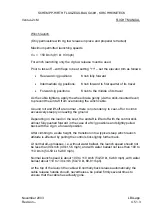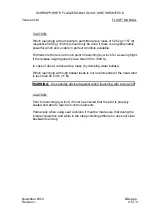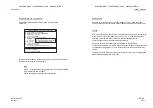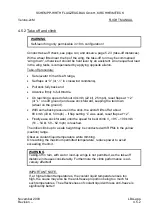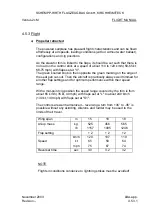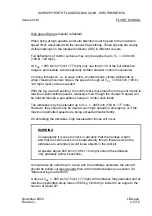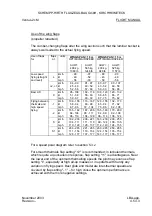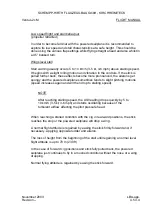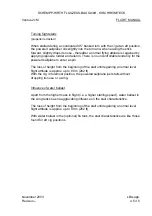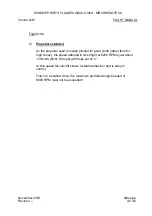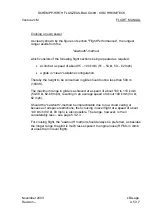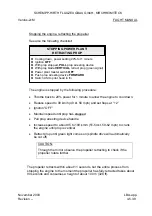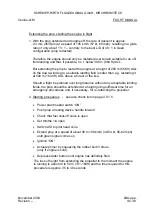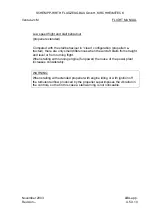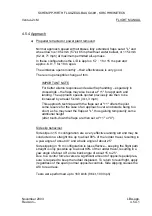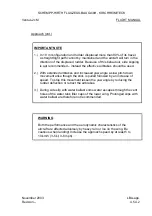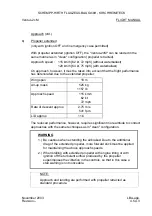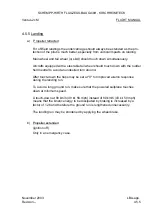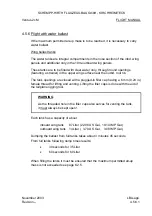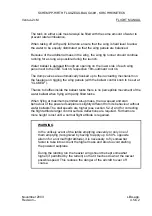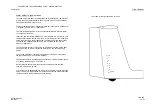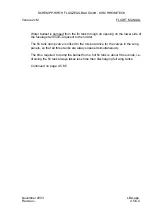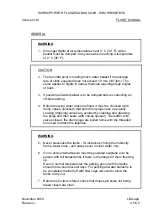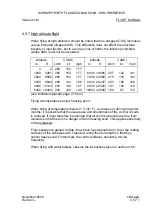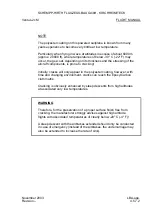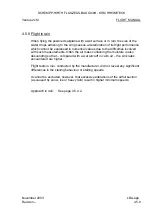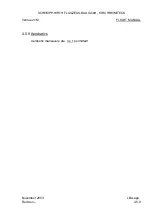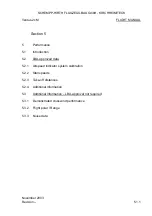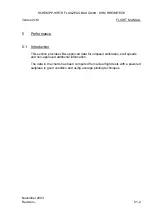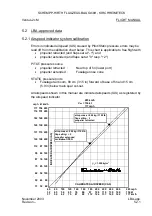
SCHEMPP-HIRTH FLUGZEUGBAU GmbH., KIRCHHEIM/TECK
Ventus-2cM
FLIGHT MANUAL
4.5.4 Approach
a) Propeller retracted or power plant removed
Normal approach speed with airbrakes fully extended, flaps set at "L" and
wheel down is 105 km/h (57 kt, 65 mph without water ballast, or 115 km/h
(62 kt, 71 mph) at maximum permitted all-up mass.
In these configurations the L/D is approx. 5.7 : 1 for 15 m span and
approx. 6.9 : 1 for 18 m span.
The airbrakes open smoothly – their effectiveness is very good.
There is no perceptible change of trim.
IMPORTANT NOTE
For better aileron response and easier flap handling – especially in
crosswinds – the flaps may also be set at "+1" for approach and
landing. The approach speeds quoted previously are then to be
increased by at least 5 km/h (3 kt, 3 mph).
This approach technique with the flaps set at "+1" offers the pilot
some reserve for the case of an approach over an obstacle being too
short, as he may reset the flaps at ''L'', thus gaining temporarily some
additional height
(after touch-down the flaps are then set at "+1" or "0").
Side slip behaviour
Side slips in 15 m configuration are a very effective landing aid and may be
conducted in a straight line up to about 90% of the rudder travel, resulting in
a yaw angle of about 40° and a bank angle of about 25°.
Side slipping in 18 m configuration is less effective – keeping the flight path
straight is only possible up to about 80% of the rudder travel, resulting in a
yaw angle of about 40° and a bank angle of about 15 to 25°.
Due to a control force reversal a significant amount of opposite pedal pres-
sure is required to keep the rudder displaced. To return to level flight, apply
(regardless of the span) normal opposite controls. Side slipping causes the
ASI to read less.
Tests were performed up to 160 km/h (86 kt, 100 mph)
November
2003
LBA-app.
Revision --
4.5.4.1
Summary of Contents for Ventus-2cM
Page 11: ......

